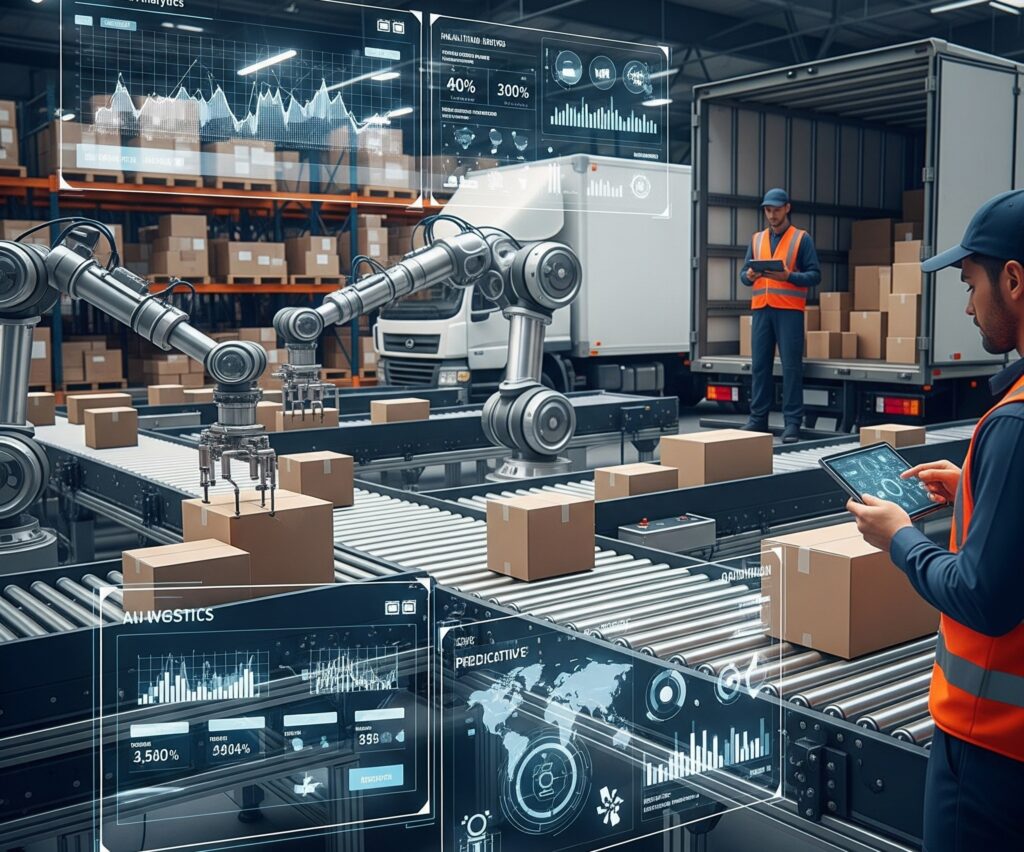In the world of eCommerce, the customer experience doesn’t end at checkout, it continues until the product is in the customer’s hands, delivered on time and as expected. Behind the scenes, your supply chain plays a pivotal role in that journey. But in today’s fast paced market, traditional supply chain models are struggling to keep up.
This is where Artificial Intelligence (AI) steps in.
AI is transforming supply chain operations across the globe, helping eCommerce businesses reduce costs, improve efficiency, and enhance customer satisfaction. In this article, we’ll explore how AI powered supply chain optimisation works, what benefits it delivers and how you can implement it to future proof your business.
Why Traditional Supply Chains Are No Longer Enough
Supply chains used to be relatively predictable. But with global volatility, rising customer expectations and complex fulfilment networks, eCommerce brands face new challenges:
– Delays from overseas suppliers
– Inventory imbalances
– Lack of real time visibility
– Over reliance on manual forecasting
– Rising logistics costs
AI offers a smarter, more responsive approach one that can adapt in real time and make proactive decisions that drive growth.
How AI Optimises the eCommerce Supply Chain
1. Demand Forecasting with Machine Learning
AI can analyse:
– Historical sales data
– Market trends
– Weather patterns
– Seasonality
– Consumer behaviour
– Social media trends
It then predicts demand more accurately than human planners, helping you order the right stock at the right time. This reduces overstock, stockouts and costly last minute replenishment.
2. Inventory Management Across Multiple Channels
AI monitors real time inventory across:
– Warehouses
– 3PL partners
– Fulfilment centres
– Retail locations
It dynamically reallocates stock to where it’s needed most, avoiding surplus in one location and shortages in another. It can even suggest SKU rationalisation to streamline your product range.
3. Supplier Relationship and Risk Management
AI identifies:
– Late or unreliable suppliers
– Alternative suppliers based on location or lead time
– Supply chain bottlenecks before they impact delivery
AI tools also use predictive analytics to assess risk for example, geopolitical events or weather disruptions and recommend contingency plans.
4. Warehouse Automation and Efficiency
AI driven tools like robotics, RFID sensors and computer vision systems:
– Track stock movement in real time
– Suggest optimal picking and packing routes
– Predict restocking needs
– Minimise human error and time spent on manual tasks
Combined, these technologies reduce fulfilment time and cut operational costs.
5. Logistics and Delivery Optimisation
AI can map the most efficient delivery routes using:
– Real time traffic data
– Fuel efficiency models
– Courier performance history
It also predicts delivery times with remarkable accuracy and can recommend the best carriers for each order based on past performance, cost and customer location.
6. Returns and Reverse Logistics
AI can streamline returns processing by:
– Automatically categorising return reasons
– Predicting return likelihood by product type or customer profile
– Automating restock or resale decisions
It can also flag customers who frequently return products and suggest interventions to reduce costs.
Benefits of AI Powered Supply Chain Management
Reduced Costs
– Fewer inventory errors
– Lower warehousing costs
– Smarter logistics = less waste
Greater Agility
– React faster to supply chain disruptions
– Adapt promotions or reorder schedules based on real time data
Enhanced Customer Satisfaction
– More reliable delivery
– Improved stock availability
– Transparent tracking and updates
Sustainability Gains
– Smarter shipping and inventory models reduce environmental impact
– AI helps you identify waste and optimise packaging or delivery frequency
Real World Example: Zara’s AI Driven Supply Chain
Fashion retailer Zara uses AI to:
– Predict demand for each store by day
– Adjust manufacturing and shipping accordingly
– Reduce overproduction and shorten time to market
As a result, they maintain an ultra responsive supply chain that replenishes shelves in just two weeks a model that gives them a major edge in the fast fashion space.
AI Supply Chain Tools to Explore
– Llamasoft: Predictive modelling and scenario planning
– ClearMetal: AI powered inventory and fulfilment optimisation
– Blue Yonder: Demand planning and warehouse optimisation
– ToolsGroup: End to end planning and risk management
– Verusen: Intelligent inventory and materials management
These platforms often integrate with eCommerce backends, ERPs and WMS software.
Getting Started: How to Implement AI in Your Supply Chain
Step 1: Audit Your Supply Chain Data
AI needs good data to deliver results. Start by evaluating your:
– Sales history
– Supplier performance records
– Inventory logs
– Delivery timeframes
Step 2: Identify High Impact Areas
Where are you losing the most time or money?
– Overstock?
– Late shipments?
– Wasted labour in fulfilment?
Pick one area and start small before expanding.
Step 3: Choose the Right Tools
Don’t overspend on features you don’t need. Look for:
– Integrations with your existing stack
– User friendly dashboards
– Support and onboarding guidance
Step 4: Monitor and Refine
AI models improve over time. Regularly assess KPIs like:
– Order accuracy
– Fulfilment time
– Inventory turnover
– Customer satisfaction
Adjust rules and parameters based on your goals.
AI and the Future of Supply Chain in eCommerce
As global commerce becomes more unpredictable, eCommerce brands must move from reactive to proactive supply chain strategies. AI makes this possible.
In the future, expect to see:
– Fully autonomous warehouses
– AI driven sustainability scoring for every shipment
– Supply chain visibility from source to doorstep
– Predictive alerts before disruptions even occur
Final Thoughts
AI in supply chain management isn’t just about reducing costs, it’s about creating a seamless, scalable, and resilient infrastructure that supports your growth.
At eCommerceXpert, we work with businesses to integrate smart supply chain solutions tailored to their scale, structure, and sales channels. Whether you’re struggling with inventory chaos or planning global expansion, AI can help you get there with confidence.
Want to streamline your supply chain and deliver smarter, faster, and leaner?
Let’s build a logistics model fit for the future to agile operations and on time delivery,
Myk Baxter
eCommerce Expert
The post AI in Supply Chain Optimisation: Streamlining Operations for eCommerce Success appeared first on eCommerce Expert.





